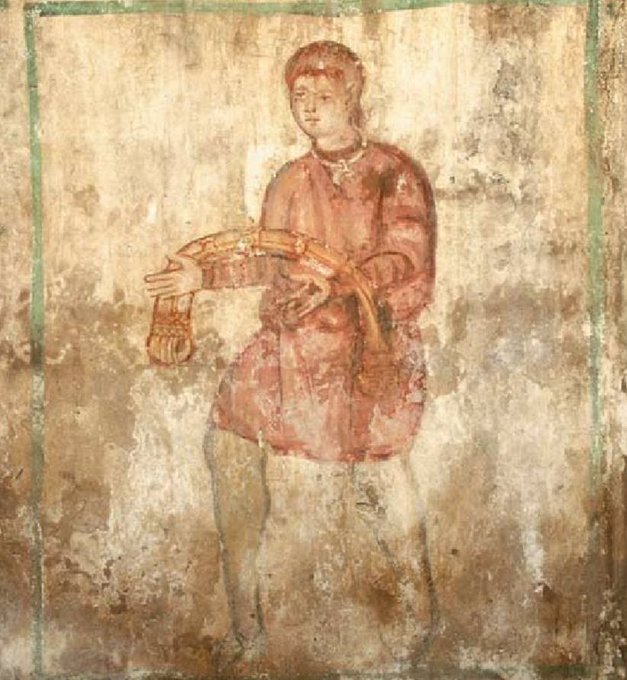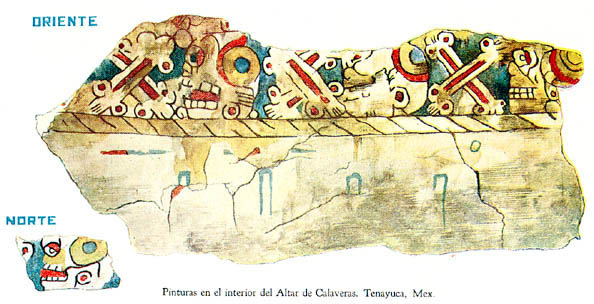FrescoFridayのTwitterイラスト検索結果。 140 件中 7ページ目
frescoのインクローラーってアナログっぽくて楽しくないです?
#fresco #FrescoFriday #インクローラー
A last #FrescoFriday for the morning, with this awesome panel of Dido from the House of Meleager, Pompeii (VI.9.2). Dido is seated on her throne, with an attendant personification of Africa, as Aeneas' ship departs. #Dido
Image: National Archaeological Museum, Naples (8898)
For #FrescoFriday a detail of a painting from the Cubiculum (bedroom) of the villa of Publius Fannius Synistor at Boscoreale, depicting a rocky scenery with a balustrade and an arbor in the upper part and a cave with a fountain and various birds in the... 1/2
#RomanArchaeology
This #FrescoFriday we present this incredible work from the Tomb of the Dancers!
Found in a Peucetian tomb in Ruvo di Puglia, Italy, it dates to the 5th - 4th century BCE. Discovered in 1833, the tomb held the remains of a distinguished warrior. #Classics
Now held by @MANNapoli
Detail of Aeolus, king and keeper of the winds, from the ceiling of the Sala di Ulisse at the Palazzo Poggi in Bologna. Painted by Pellegrino Tibaldi (1527-1596). #FrescoFriday
A #FrescoFriday inspired by last week episode of "Pompei. La città viva", the new podcast by @ElectaEditore & @PianoPItalia. This detail from the fullonica of Veranius Hypsaeus in @pompeii_sites portrays a man brushing wool cloth while the one under the cage is whitening a fabric
Yes, this is a layup, but: we can't have #FrescoFriday without #Giotto's Cappella degli Scrovegni in Padova. These early 14th c. fresco cycles were influential for depicting spatial perspective and emotive human feeling in vibrant technicolor. #protorenaissance #medievaltwitter
These panels come from the #Roman Tomb of Silistra (#Bulgaria), part of a frieze depicting 11 servants/slaves carrying a range of domestic artefacts - including (clockwise from top left) perfume, a belt, trousers, & a jug & patera.
Mid-C4th AD #FrescoFriday
#FrescoFriday This lovely Jordanian lady is from one of the beautiful tomb frescos from Seleucia Abila, 2nd to 3rd century CE, Qweilbeh, #Jordan photos from https://t.co/416tLcGfPi read more on this incredible and somewhat neglected site here https://t.co/A3rxglPQlE #صباح_الخير
Salve lar familiaris. Salvete Di Penates. Salve Vesta Mater.
Please bless us, O sacred gods, with all that is good, auspicious, fruitful, fortunate, and wholesome.
May 2021 be prosperous for one and all!
#FrescoFriday #2021Wishes #NewYearsGoodLuck
For #FrescoFriday two exquisite vignettes from Moregine 600m south of #Pompeii These are believed to have decorated a large guest house at Pompeii's lost harbour, for wealthy merchants visiting the town.
For #FrescoFriday a 1st Cent. Roman fresco recovered from Vesuvian ash at Stabiae on the Bay of Naples Pic: mharrsch #RomanArchaeology #Archaeology #Vesuvius #Pompeii
Yet another fresco from Pompeii, now at @MANNapoli. It shows two teenage girls, one of them reading attentively the open polyptych, and at the same time thoughtfully touching her lips by the stylus. A curious friend looks from behind her shoulder. 1st century AD.
#FrescoFriday
#Pompeii's frescos are still being uncovered to this day and their timeless beauty will never fail to amaze. A treasure to humanity preserved, tragically, by the hand of Destiny, not by the hand of mankind #FrescoFriday
I love #Roman art & artefacts which preserve little snapshots of everyday life in antiquity - such as this fresco from Italy, showing 2 men (probably slaves) preparing a meat dish for a banquet. It probably decorated the walls of a tavern rather than a private home.
#FrescoFriday
Greek Bronze Age wall paintings from Mycenae. Over 3,000 years old. On display at the National Archaeological Museum in Athens @namuseumathens.
#FrescoFriday
#Archaeology
#FrescoFriday Why shouldn't you offend Dionysus? Pentheus, king of Thebes, banned women from participating in his rites. A drunken frenzy of women mistook him for a wild beast, his own mother tore off his head as a trophy. Ouch! Scene from a triclinium @House of Vettii (Pompeii).
#FrescoFriday In Aztec times (1,000 years after Teotihuacan), frescos were used in temples and elite residences, not in commoner houses. This one is from Tenayucca (ca. AD 1100-1300), in Mexico City. Aztec artists anticipated the skull and cross-bones motif long before pirates!


























































